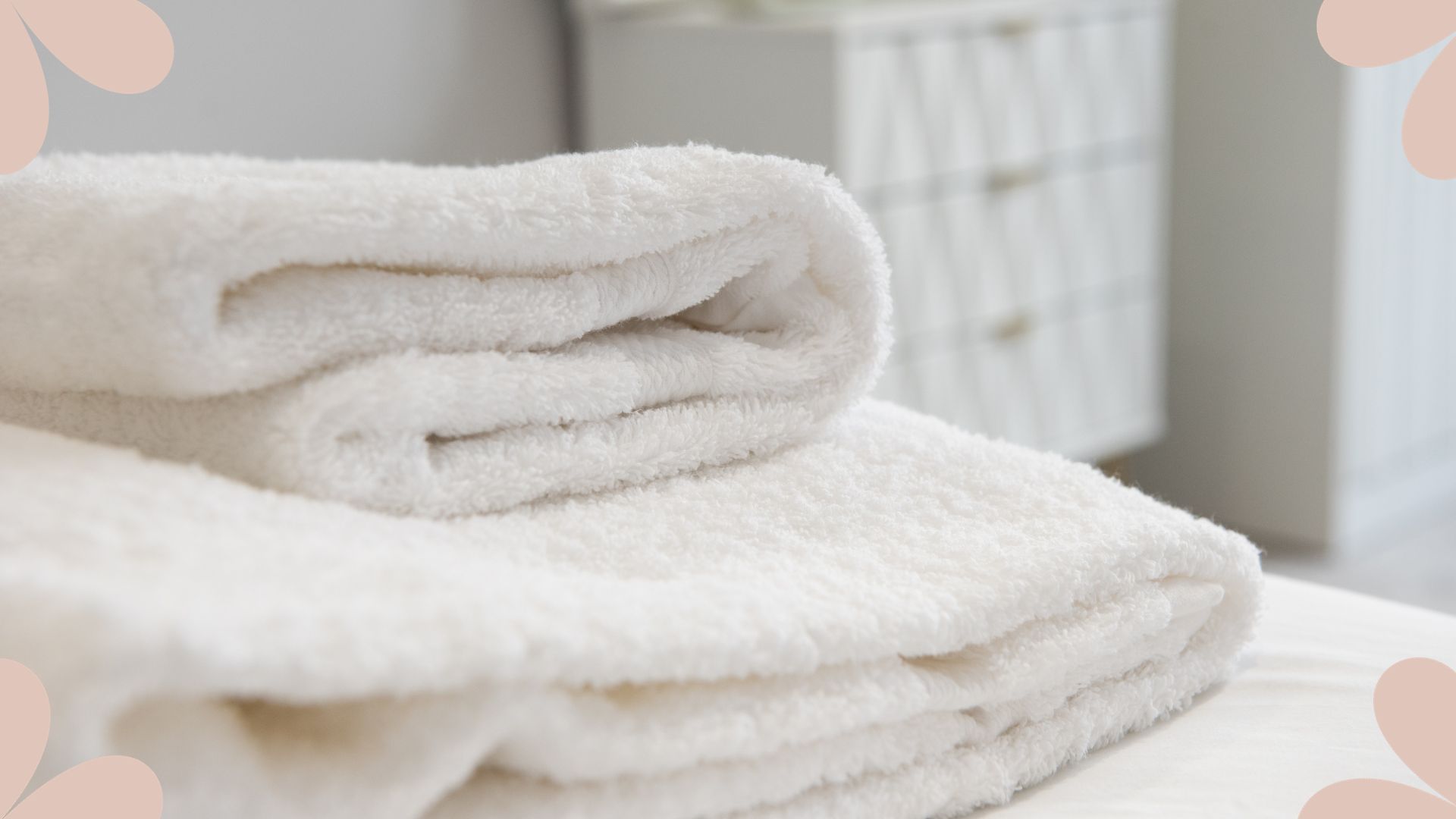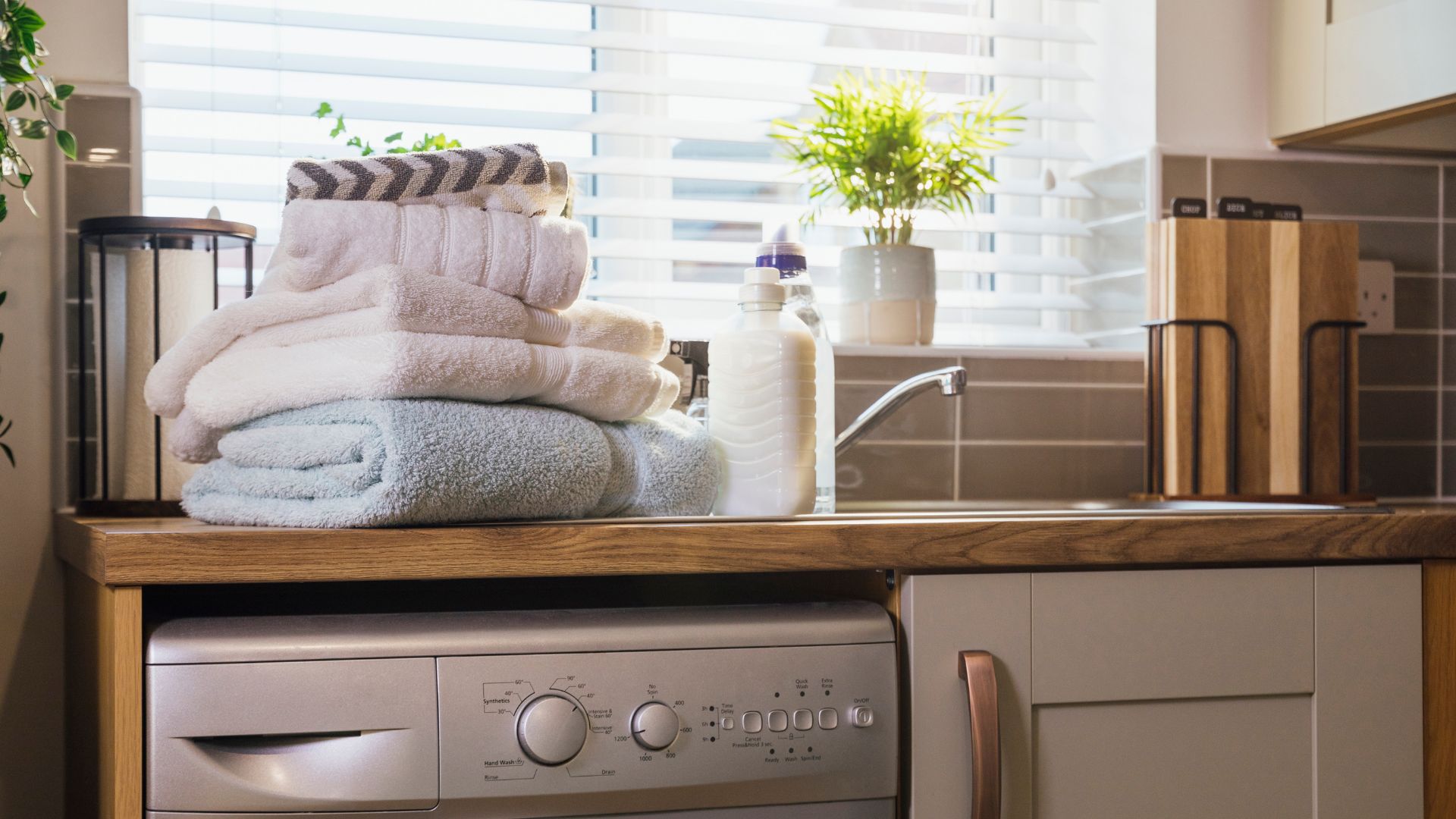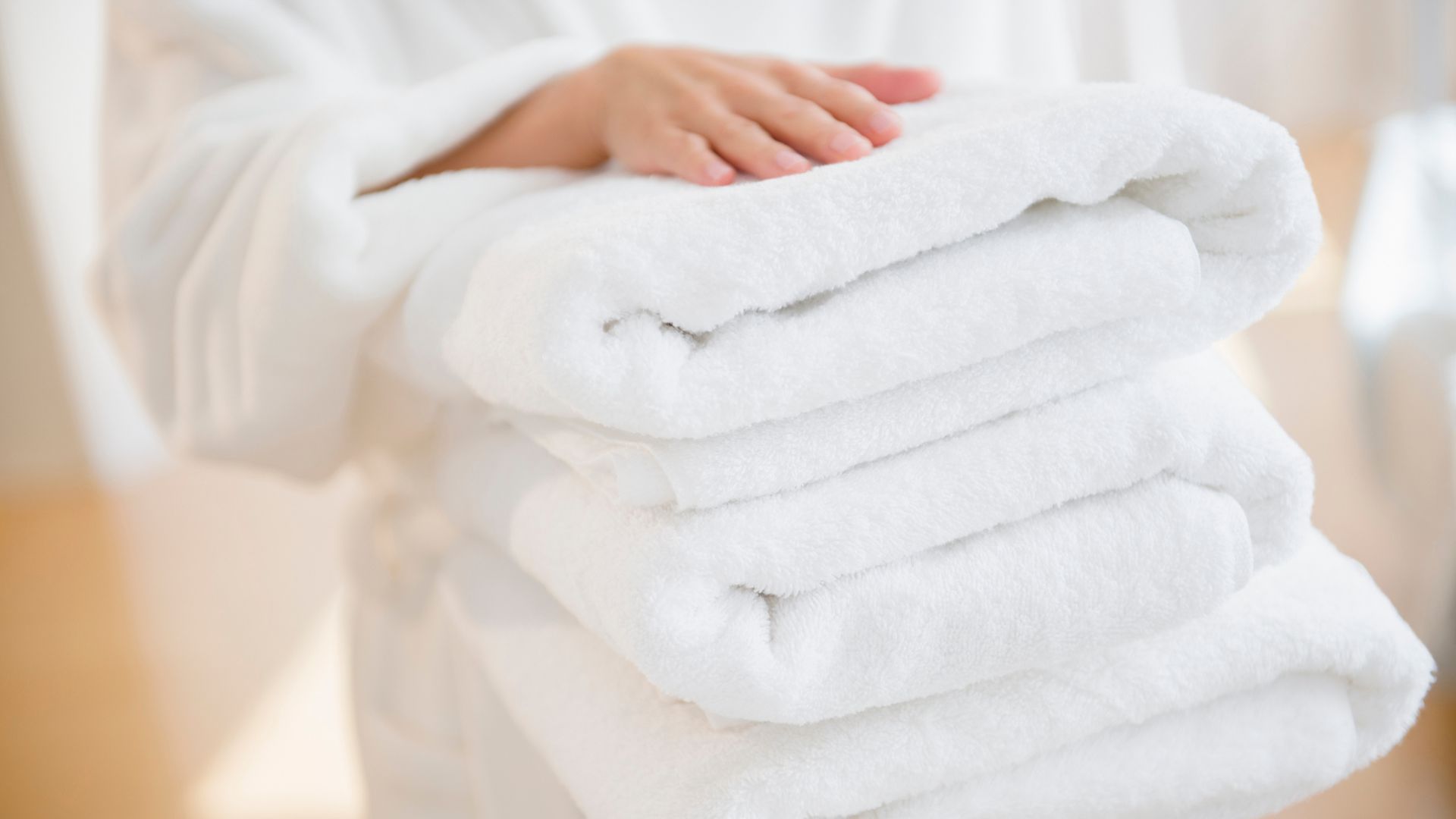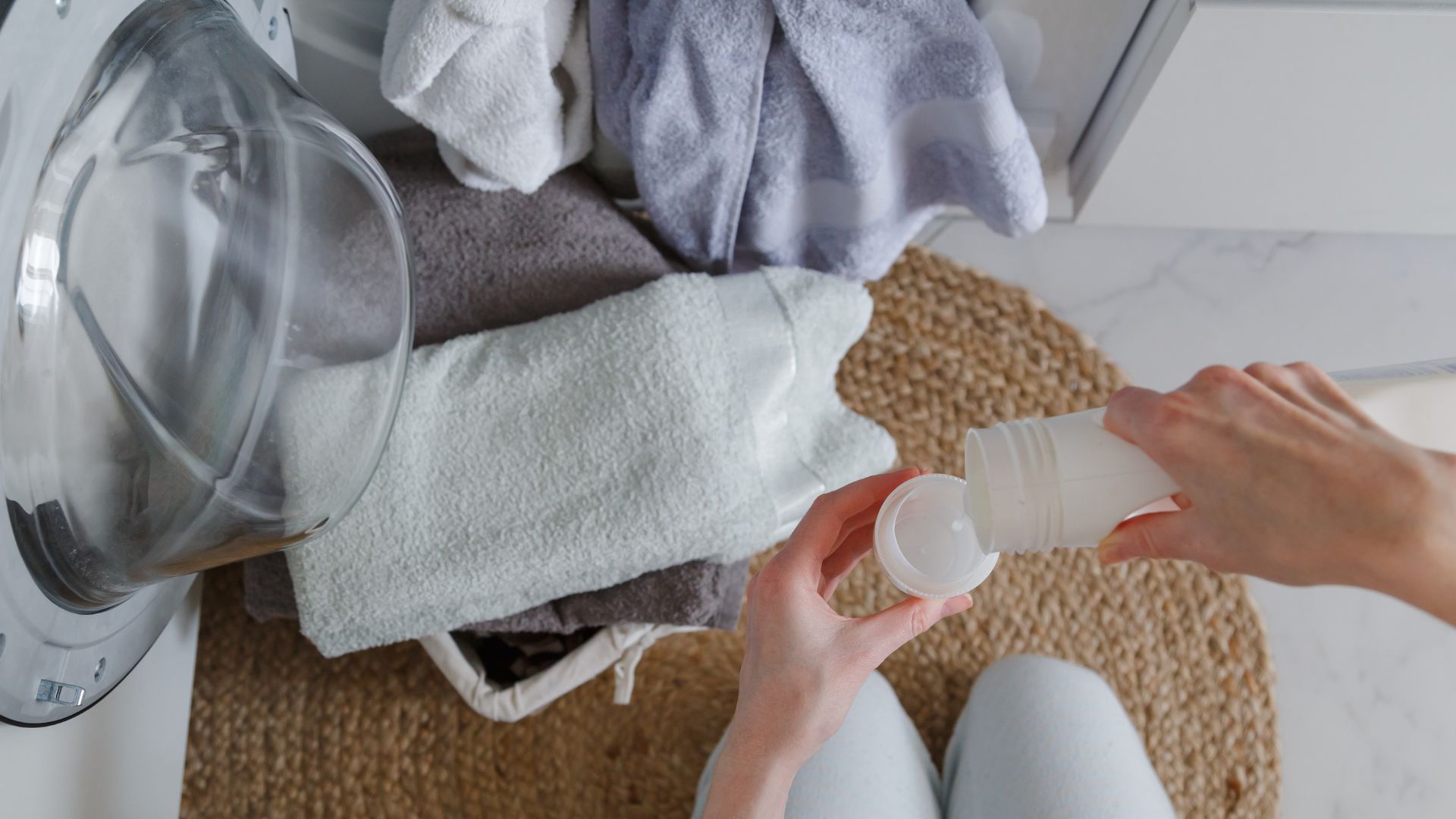
There's nothing quite as delightful as stepping out of a hot shower into a warm fluffy towel, the instant cosy and comforting feeling is unbeaten. This is why it's important to know the signs when our towels are past their fluffy due dates and need replacing.
Unfortunately, even if you clean your towels with great care even the best towels have a shelf life and reach a point when they are no longer absorbent. Perhaps you've started to notice they feel a little scratchy or that they just don't dry you off as effectively anymore, these will be the signs your towels need replacing.
So with that in mind, what are the telltale signs that we need to refresh our towels and what can we do to avoid them giving up so soon?

7 Signs your towels need replacing due to lack of absorbency
1. Water doesn't bead up
The most obvious sign that your towels need replacing is when they no longer soak up the water on your body. If the water does not soak into the fabric and stays as a droplet on top of the towel's surface then it is a clear indication of reduced absorbency.
This can be a particular problem if you're towels have a mineral build-up, explains Emily Attwood, co-founder of Scooms the bedding and towel company. "When it comes to towels, they will lose absorbency due to several reasons, one of them being the build-up that can come from washing detergent and fabric conditioner."
2. Unpleasant odour
This is perhaps one of the worst ways to find out your towels aren't as absorbent as they once were. If you're getting a rather pungent musty smell from your towels even post-wash then it may be time to say goodbye.
"A musty or mouldy odour can be a sign that they're not effectively drying themselves, which could indicate reduced absorbency," explains Allen Allen Civlak, the proprietor of Flour Sack Towels.
As much as it can be hard to say goodbye to your favourite bath towels, when this smell starts lingering it can be a sign of bacteria building up and can be a problem for your skin should you keep using them. And there's nothing worse than a damp small when you strive to make your house smell good at all costs.
3. Rough texture
It can be quite the mood dampener when you get out of the shower and your towel is scratchy and uncomfortable against your skin. So if you've found yourself wondering how to soften towels more often than usual then the irritating rough texture might be a sign they've lost their absorbency.
Emily says, "A rough feel can be because the towel's fibres have broken down and no they no longer absorb water as well which will mean the towel loses its softness."

4. Reduced fluffiness
After months, if not years of use the fibres of your towel can quickly become compressed which can not only make them look flat and worn but will also stop them from absorbing water.
When this happens there is little to be done to fix it and usually buying new towels is the only option. If you're ready for a fresh set it's a good idea to invest in towels with high-quality materials, like when buying the best thread count for sheets, to ensure you prolong any future loss of fluffiness.
Emily recommends choosing towels made of strong and long staple fibres such as Egyptian cotton or 100% cotton. However, bamboo is also another choice, this kind is not only eco-friendly but also soft and absorbent, the only downside being their longer drying time.
5. Longer drying times
When your towels aren't completely drying between uses, and you've tried all the hacks for how to dry clothes indoors, then it may be time to treat yourself to a new set.
Reaching for a towel that's still damp despite ample drying time is a clear sign that it's no longer absorbing water as it should be and a sure sign your towel needs replacing.
6. Stains that won't come out
Whether it's fake tan or dirt from the dog, you may have had to increase how often you wash your towels. So if you're noticing your towels are holding onto stains more than usual and they just aren't washing out as they've done before then this could be a sign of reduced absorbency.
"If your towels start to accumulate stains that you can't remove with regular washing, it may be because they are no longer absorbing and rinsing effectively," explains Allen.
When they stop taking in moisture when you're using them then chances are they're not soaking up the water and detergent in your washing machine either.

7. Frequent lint in the dryer filter
This one may come as a surprise and may have escaped your attention. After all many of us won't pay much attention to the lint our dryers produce. However, finding an excess of lint in the dryer is a big visual clue that your towels are not at their best.
Allen explains, "Towels that are losing their absorbency may start shedding more lint during the drying process." This might also be another reason why your towels aren't fluffy like they used to be, all those soft fibres have probably been lost in the dryer.
Expert tips to keep your towels fresher for longer
It can be a costly step to replace all of your towels at once when they become scratchy, smelly or consistently damp. So if you want to keep your towels in their best condition for as long as possible then Allen has offered a few tips to delay the demise of your favourite fluffy towels.
- Use mild detergent: It's a good idea to check the type of detergent you're using and make sure it's on the gentler side, this will mean that when you wash your towels the fibres aren't easily damaged and the absorbency stays put for as long as possible.
- Don't use fabric softeners: As much as we want our towels to be extremely soft, Allen warns against using fabric softener as it can leave a residue after each wash which can eventually build up and reduce absorbency over time.
- Avoid overloading your washer: Although it can be tempting to put as much as possible into each wash load this can stop the machine from properly cleaning the items and may also damage your towels.
- Replacing every few years: Allen recommends replacing your towels every few years or when they begin showing signs of wear. He recommends choosing towels with high-quality materials with Egyptian or Pima cotton as they tend to be more absorbent and durable.
If you've come to terms with the fact that you need a new towel set then there are several things you can do with your old towels. Emily says, "We tend to reuse all our old towels, using smaller ones to dry our dog after a wash after a muddy walk, however, if you don’t have a pet, you could contact a local animal charity and see if they need any old towels."
Failing this, you can use old large towels for any DIY projects you might be taking on, perhaps you're updating your kitchen cabinet colour with a new lick of paint or cleaning radiators and require an alternative dust sheet.







